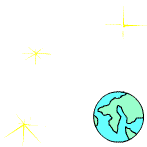Asteroids
Created | Updated Nov 18, 2013

Asteroids are large chunks of stone, iron or ice screaming through space in the area known as the Asteroid Belt. The best clue to finding out what they're made of is to examine those asteroids that come down through Earth's atmosphere, at which point they are known as meteorites. Many meteorite fragments have been found on Earth (just look for the craters!), so it's been a simple matter of physical and chemical analysis to discover what they're made of.
There are basically two types of meteorites:
Aerolites, which are largely made up of rock and other silicates.
Siderites, which are made up of a metallic nickel-iron alloy.
It's probably safe to assume that asteroids as a whole share these types of composition as well. How they came to be made up that way is still debated - some think that the Asteroid Belt was left-over matter from the formation of the planets, some think it might be the remains of a planet that met a particularly destructive end, maybe at the hands of a comet or another asteroid from outside the solar system.
Every day, Earth is assailed with little chunks of rock called micrometeorites. Those, we need not worry about, as they are too small to make a big impact or even be noticed. However, there are larger meteorites and comets out there, and there's considerable evidence of asteroid impacts if you look in the right places.
Asteroid Names
Just because of a handful of Earth-crossers (see below), asteroids have incurred an undeserved reputation for trouble-making. In fact, of the more than 11,000 known minor elements, as astronomers prefer to call them, most of them stick to several main orbital routes, and have no interest whatever in spoiling your life.
As each element is discovered and verified, it is assigned a number indicating its order of discovery in an annual publication called The Ephemerides of Minor Planets. The discoverer can then name the asteroid pretty much what he or she likes, as long as it's not rude or embarrassing.
At first asteroids were named after mythological characters, and then gradually after wives, girlfriends, other scientists, famous dead people, geographical locations on Earth, cats, birds, and occasionally concepts. At this time, over 7000 elements have proper names, and there is currently quite a fad for naming them after birds.
A Sampling of Asteroid Names
Veritas, Mary, Hartpoorpeesdam, Rumpelstilz, Arizona, Symmetria, Frigga, Tianjin, Cheshirecat, Boulder, Imhotep, Poseidon, Latvia, Elvira, Douglas, Pittsburghia, Irene, Winchester.
Earth-crossers
The orbit of an Earth-crosser may in fact intersect orbits of all the inner planets. This means that at any time the Earth-crosser's orbit is liable to perturbation (change) by the gravity of those planets. So far, the Minor Planet Center at the Smithsonian Observatory is keeping on top of these changes, but a few odd bodies, such as Toro, Icarus and Apollo, bear close watching.
Missing Asteroids
Sometimes asteroids go missing. The most famous case is that of Hermes (the Magician), which disappeared before anyone could even slap a number on the chassis. The following minor elements are missing and unaccounted for: 473 Nolli, 719 Albert, 724 Hapag, 878 Mildred, 1026 Ingrid and 1179 Mally.
And these asteroids were gone for a while, but have turned up again: 452 Hamilton, 843 Nicolaia, 1538 Detre and 330 Adalberta.

